The 1970 AMC Javelin SST Trans Am Edition doesn’t usually show up in the muscle car greatest-hits list—but maybe it should. Built in just 100 units to meet SCCA Trans Am homologation rules, this was AMC’s way of saying they weren’t content watching from the sidelines. It wasn’t a gimmick. It was the street-legal version of the car Mark Donohue wheeled around road courses, and it shared more than just paint.
This Javelin wasn’t built to chase popularity. It was built with a purpose—and that purpose left rubber, noise, and a rare legacy behind.
Born for the Track: Trans Am Origins
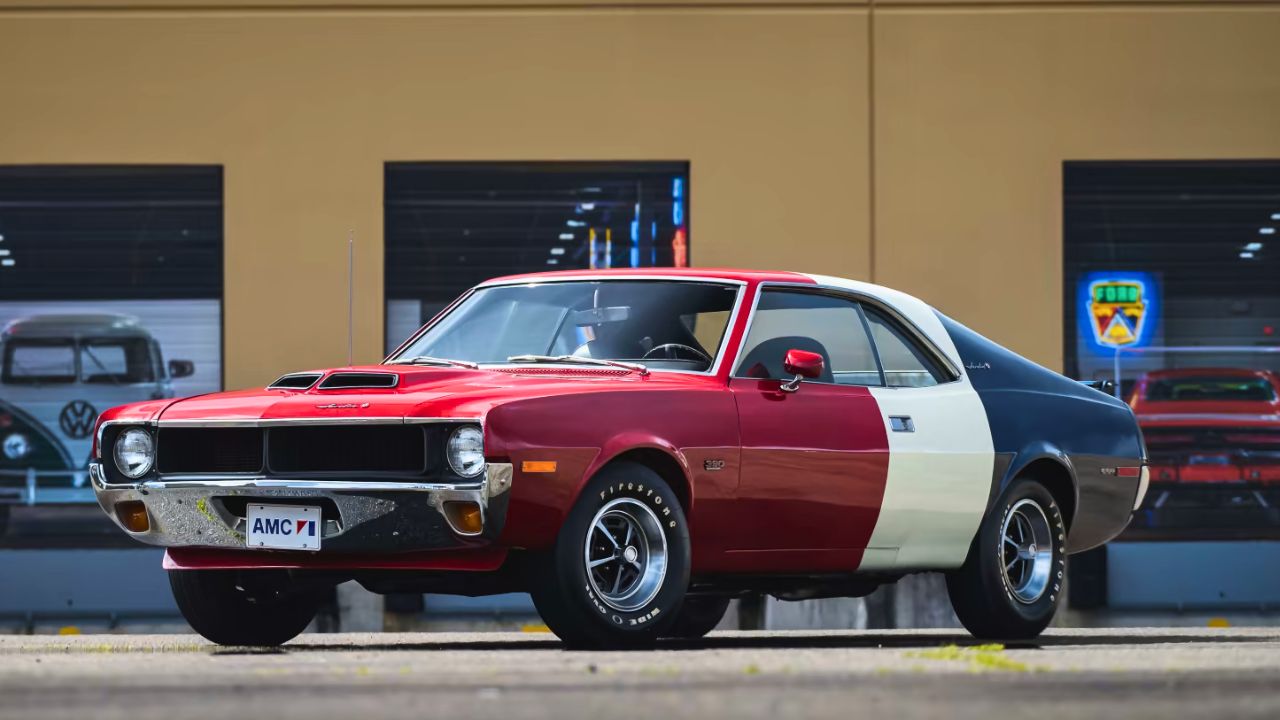
The 1970 Javelin SST Trans Am wasn’t just a paint-and-stripe package. It was AMC’s factory-built answer to the SCCA Trans Am series, where it squared off against Mustangs, Camaros, and Challengers. This was AMC’s push to shake off its underdog label and get serious about performance.
Each car came with racing DNA baked in, borrowing from the Penske-prepped Trans Am racers. AMC produced just 100 of these to meet homologation rules, and they weren’t showroom fluff—they were built to echo what Mark Donohue was driving on Sunday afternoons.
Only 100 Made: Real-Deal Rarity
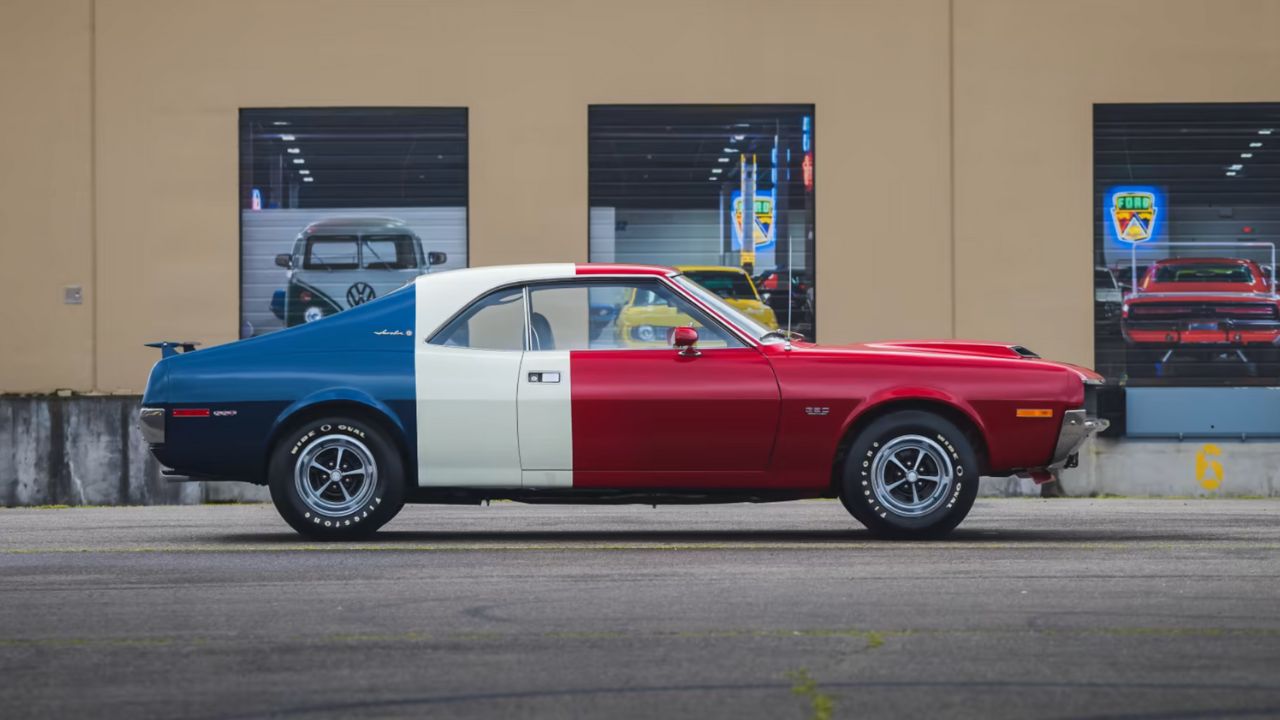
AMC wasn’t in the habit of building halo cars for the sake of image. The 1970 Javelin SST Trans Am was a true low-production special. Just 100 were made to satisfy SCCA rules, making them extremely tough to find today—especially untouched examples.
Each one was finished in red, white, and blue with race-style spoilers and fiberglass hoods. These weren’t dealer dress-ups. They were assembled at AMC’s Kenosha plant and came with a unique tag identifying them as real Trans Am Editions. If you see one, chances are it’s the real deal.
390 V8 Power with Real Bite
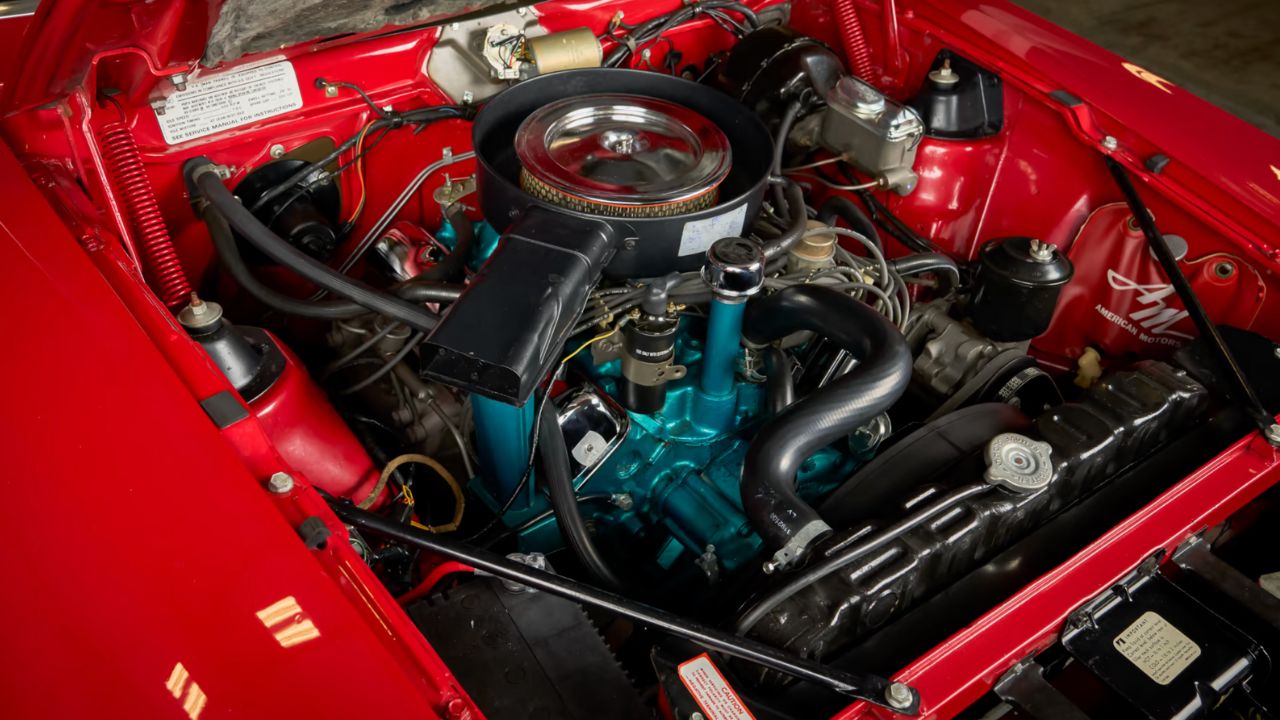
Under the hood sat AMC’s 390 cubic-inch V8, pushing out 325 horsepower and 425 lb-ft of torque. It was paired to a Borg-Warner T10 4-speed manual or optional automatic. The SST Trans Am wasn’t all noise—it had the numbers to back it.
This V8 was underrated on paper. On the street or strip, it could punch way above its class. With 10.2:1 compression and a Motorcraft 4-barrel carb, the power came in fast and stayed solid. It was no race motor, but it wasn’t trying to be tame either.
Suspension That Wasn’t Just for Show
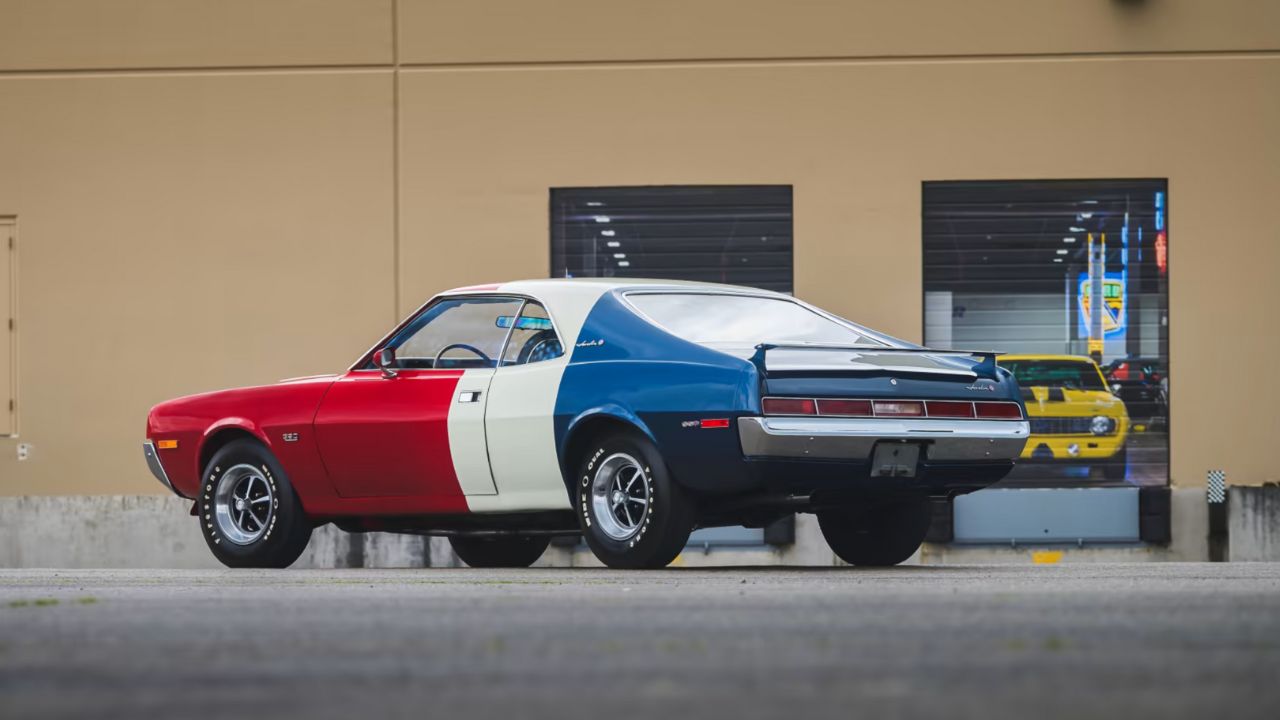
AMC didn’t just slap racing stripes on a Javelin and call it a day. The SST Trans Am had handling upgrades that made a real difference. It ran a front sway bar, heavy-duty shocks, and stiffer springs to sharpen road feel and reduce body roll.
The car also sat lower than a standard Javelin SST, improving stance and grip. Even with its muscle car roots, it handled curves better than most of its rivals in ’70. It wasn’t all-out track-tuned, but for something built in small numbers, it held its own.
Racing Pedigree from Penske and Donohue

Mark Donohue and Roger Penske didn’t just lend their names to AMC’s racing effort—they brought results. In 1970, AMC’s factory-backed Javelins were suddenly winning races, thanks to Donohue’s setup knowledge and Penske’s meticulous approach.
That success filtered directly into the SST Trans Am. It wasn’t a full-blown race car, but the visual and mechanical cues came straight from the track. The rear spoiler, fiberglass cowl hood, and paint scheme all mimicked what fans saw on race day—and that sold cars.
Eye-Catching Paint With a Purpose

The red, white, and blue paint wasn’t just patriotic—it was marketing that worked. Each of the 100 SST Trans Am cars wore the tri-color scheme AMC was running in Trans Am competition. The stripes weren’t decals—they were sprayed on at the factory.
That finish made it instantly recognizable. From the spoilers to the racing mirrors, every piece had a reason to be there. AMC didn’t just want it to stand out—they wanted it to be instantly tied to what was happening on SCCA tracks across the country.
Factory Interior, Race-Inspired Touch
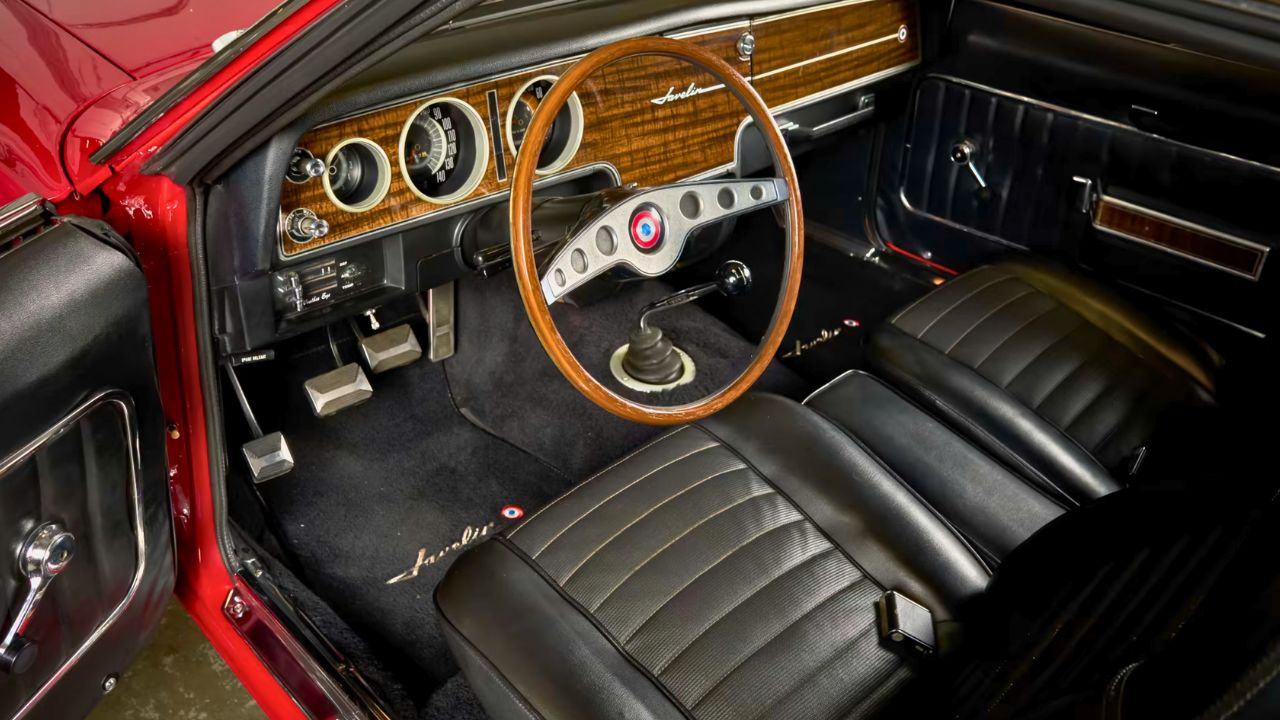
Inside, the SST Trans Am was closer to a street car, but that didn’t mean it lacked presence. Bucket seats, a center console, and full instrumentation gave it a serious tone. AMC included an 8,000 RPM tach and 140 MPH speedo—not just for looks, but because the car could use them.
While not gutted like the racers, the cabin had a tight, functional layout. Materials were nothing flashy, but the experience felt focused. Everything pointed to the fact that this wasn’t just a commuter car—it was made with speed in mind.
Lightweight Hood and Functional Cowl

The fiberglass cowl induction hood wasn’t just for looks—it pulled in cooler air, helping the 390 breathe better under load. It was functional performance gear in a time when much of the competition offered more show than go.
That hood, combined with a lightweight build overall, kept weight down. Curb weight came in around 3,350 pounds. Not featherweight by any stretch, but with that much torque and a decent suspension setup, it struck a nice balance for spirited driving or weekend drag runs.
Built for Homologation, Bred for Speed

AMC didn’t build the SST Trans Am because they wanted to—it was required to enter Trans Am racing. That pressure produced one of the most interesting muscle cars of the era. It had a foot in both camps: factory production and competition legality.
These cars weren’t mass-produced toys—they were built with a purpose and only sold to check a box. But that box led to real wins on the track, and real presence on the street. AMC may not have had GM’s size, but they made their presence known.
Forgotten Muscle with Real Character
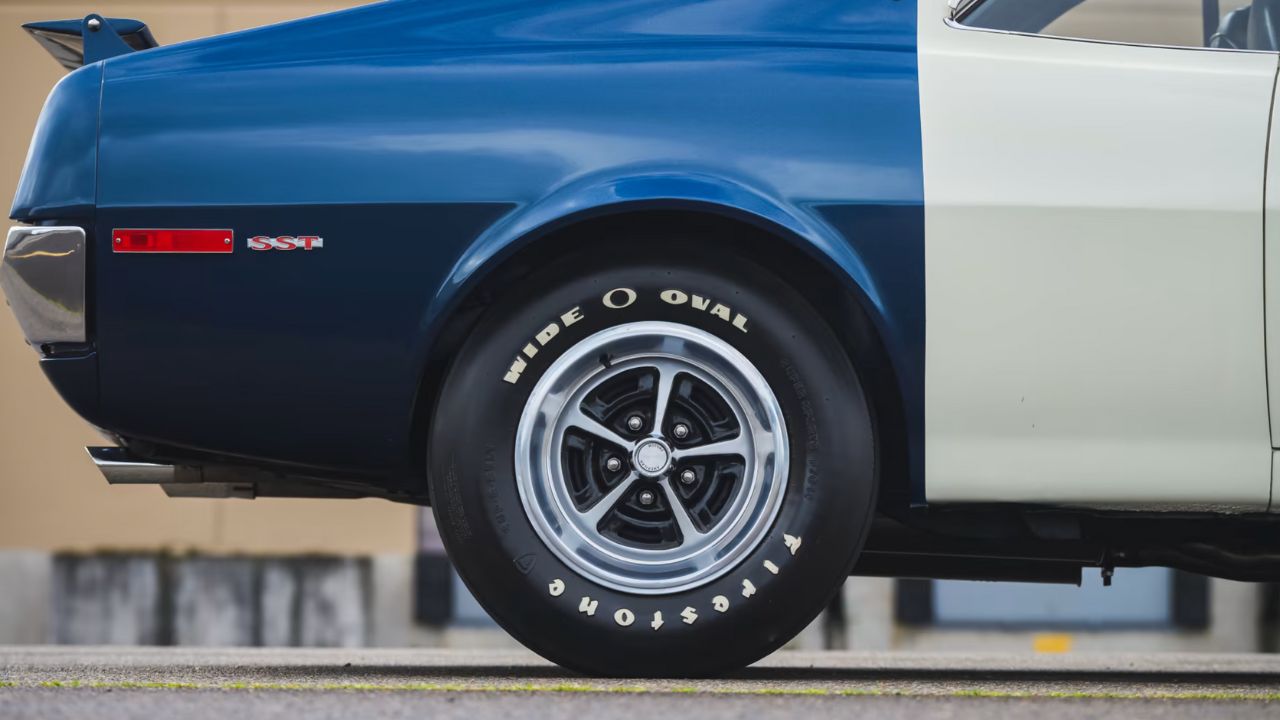
Today, the SST Trans Am is barely a footnote in most muscle car discussions—and that’s part of the appeal. It wasn’t a sales hit, and it didn’t end up in every magazine. But those who know it understand why it matters.
It’s a car built during a peak performance era, made in small numbers, and backed by serious racing effort. That’s not common. It may not have the same name recognition as a Boss 302 or Z/28, but the 1970 Javelin SST Trans Am wasn’t built to chase trends. It carved its own lane.
Like what you read? Here’s more by us:
*Created with AI assistance and editor review.


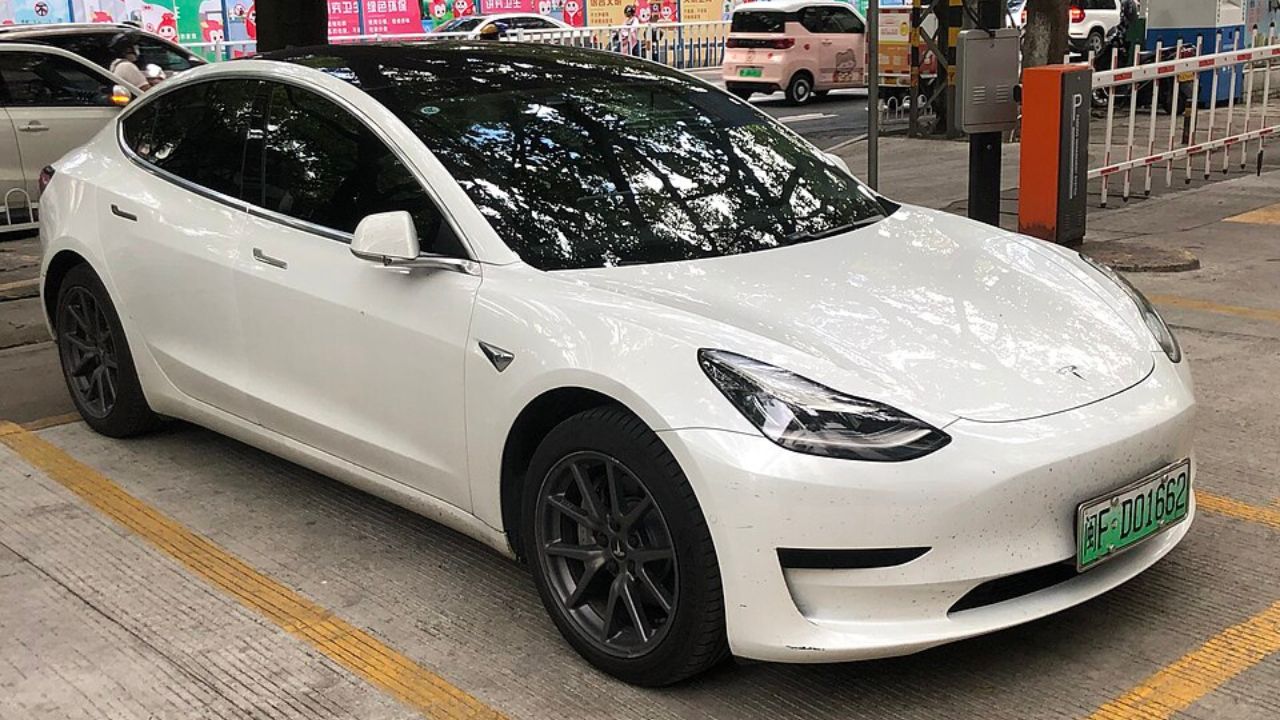
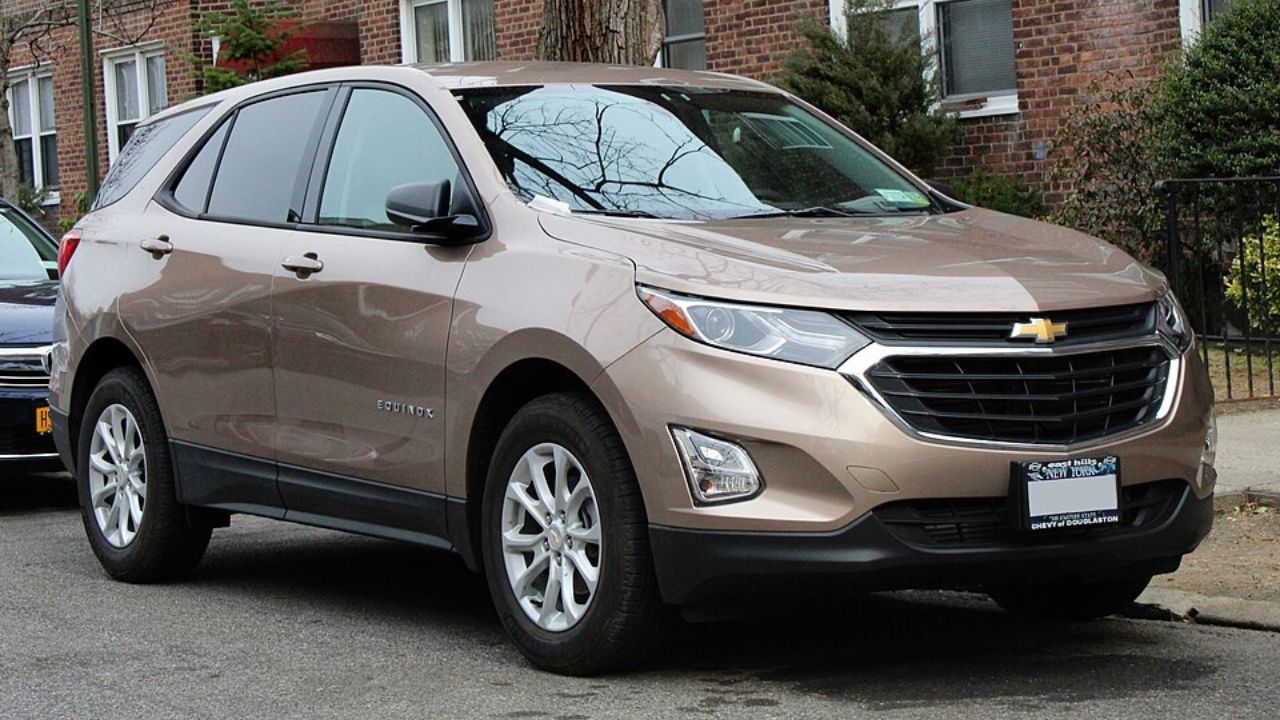

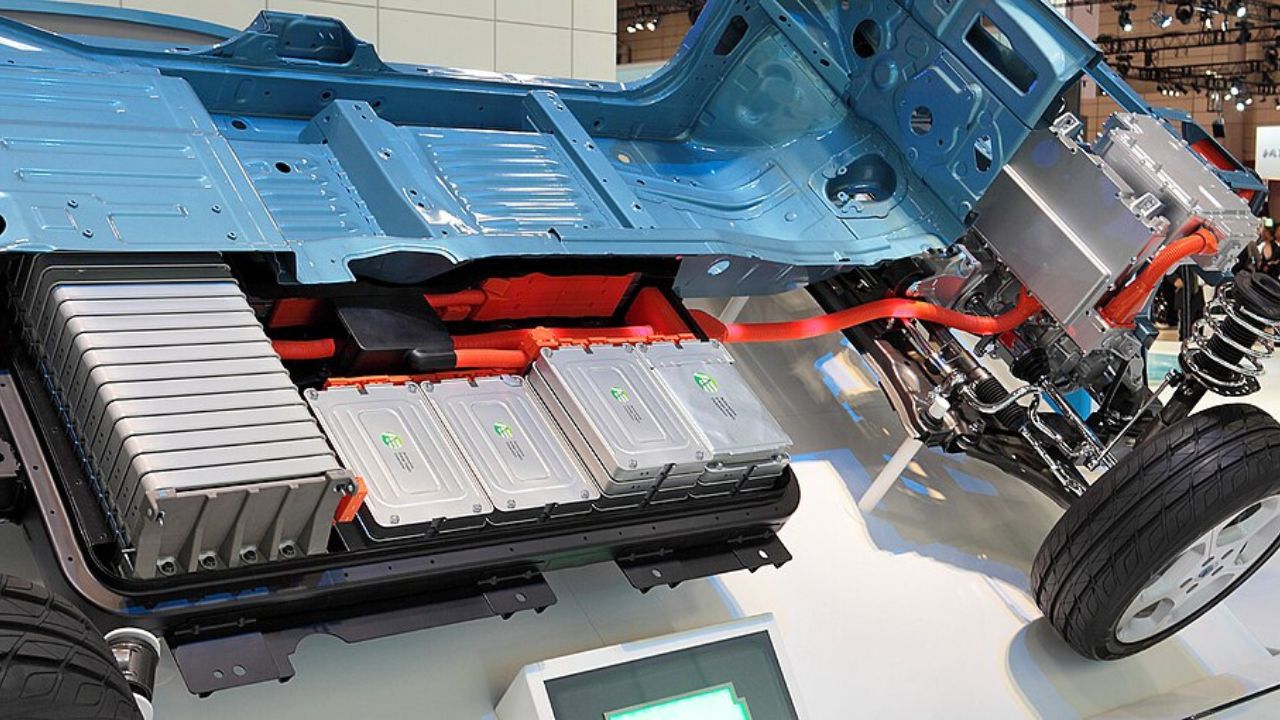

Leave a Reply